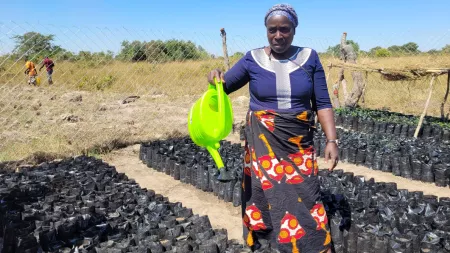Mable slowly lowers the bucket into the well. She looks down the hole to see how much water is left. Today she has to lower the bucket a little bit deeper than the days before. "I am worried that the well will run dry in only a few weeks," she says. When this happens, she and her neighbors must walk ten kilometers every day to find clean drinking water.
Mable lives in a remote village in southwestern Zambia at the foot of a river, its banks lined with vegetable gardens and meadows. A picturesque scene, but appearances are deceptive. Mable and her neighbors are already feeling the bitter consequences of the climate crisis - extreme weather events are on the rise. High temperatures, little rainfall, and long periods of drought are part of people's everyday lives. When heavy rains occur, the dry soil cannot absorb enough water and flooding occurs.
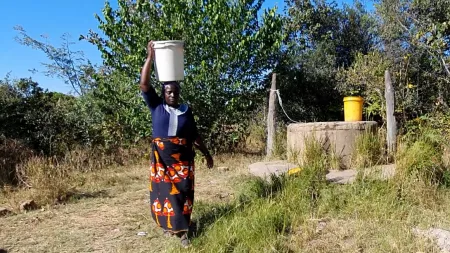
The main source of income for Mable’s village is agriculture, like for 60 percent of the Zambian population. This makes them dependent on the weather. "The money comes from what we harvest. If there is not enough water, the harvest is scarce and there is not enough income," Mable explains their struggle. The river is their lifeline, but it is much shallower than it seems at first glance. Just two months without rain and it dries out completely.
"We used to face the problems alone. Since CARE came, we work together as a community," says Mable, who is a member of one of CARE’s community groups. CARE has launched a climate project in the community. This is based on a holistic approach that makes the community more resilient to the consequences of the climate crisis and provides farmers with long-term and sustainable solutions.
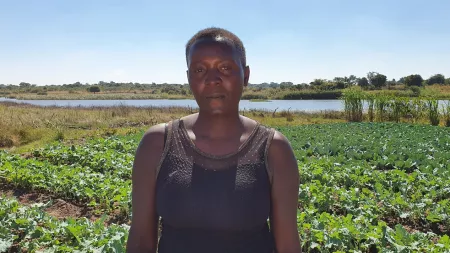
Gladness Siakwale, 23, and her husband cultivate one of the fields next to the river close to Mable’s garden. She is also a member of Mable’s group. The family of six lives off the money they earn from selling the vegetables in the next town. They grow tomatoes, cabbage, red onions and beans, among other things. "Red onions are the most profitable. Tomatoes, however, are very susceptible to pests. Therefore, it is important for us to diversify the cultivation," explains Gladness.
Diversification allows some plants to continue growing when others are infested. CARE provides drought-resistant seeds and trains farmers in maximizing yields despite the adverse climatic conditions. Gladness is especially proud that they were recently able to buy an ox cart by selling their onions. "I hope that soon we can expand our field and make even more profit," she shares.
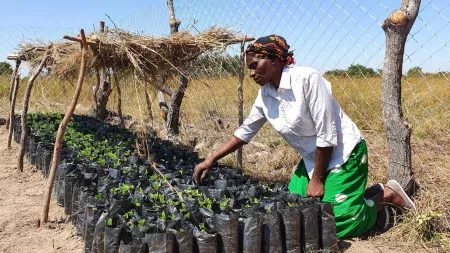
Febby Nachibanga folds the black plastic containers up and starts scooping the mud spiked with cow dung in it. With her thumb she presses the seed into the soil and starts watering it. In a yard full of little plants in different sizes and ages she lines up the new seedling next to the others in the tree nursery. Febby’s hands graze nimbly over the small seedlings. She plucks weeds while explaining: "The tree nursery is very important to our village. It allows us to improve our income and protect our agriculture at the same time."
CARE is launching the nursery-projects with the farmers. CARE provides the seedlings, and the villagers work together in the nursery: they fill the containers with soil, water the plants, and pull weeds. Everyone is keen to ensure that the trees grow healthy because they all benefit. In fact, the trees serve several purposes at once.
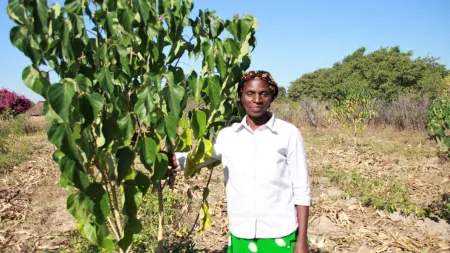
The area around the river is no longer as forested as it once was. The tree population was massively and unsustainably deforested for charcoal and tobacco production. "Without trees there is no shade or water," says Mable. The long tree roots bind important moisture in the soil. Falling leaves fertilize the fields of Gladness, Mable, Febby, and their neighbors and their cattle can also be fed with the dried leaves. Fallen branches serve as firewood for the community. Febby explains, "By selling some of the trees that we grow in the nursery, we make profit and are able to build a second income in addition to our vegetable gardens."
Another measure proves that even small innovations can have a big effect. Mable points to four sticks sticking out of the ground: "There is a silo underneath the ground. We store our corn here to protect it from moisture and pests." In the dry season, the corn serves as animal feed for the livestock. "We learned that from CARE," she explains.
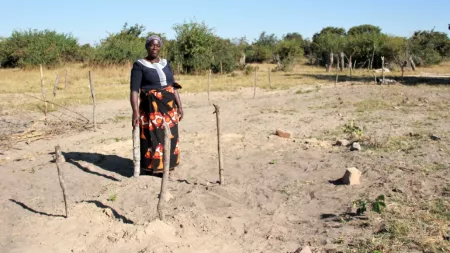
Mable, Gladness, Febby, and their neighbors are facing the challenges of the climate crisis together. Their cohesion and strong will to improve things unite them. Despite the adverse conditions they want to continue to grow and learn, and CARE supports them in their efforts.
